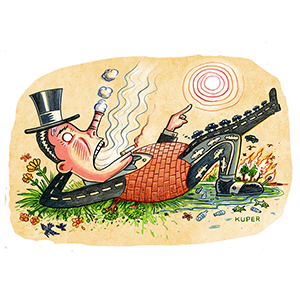Tire toxicity faces fresh scrutiny after salmon die-offs
Published in Science & Technology News
For decades, concerns about automobile pollution have focused on what comes out of the tailpipe. Now, researchers and regulators say, we need to pay more attention to toxic emissions from tires as vehicles roll down the road.
At the top of the list of worries is a chemical called 6PPD, which is added to rubber tires to help them last longer. When tires wear on pavement, 6PPD is released. It reacts with ozone to become a different chemical, 6PPD-q, which can be extremely toxic — so much so that it has been linked to repeated fish kills in Washington state.
The trouble with tires doesn’t stop there. Tires are made primarily of natural rubber and synthetic rubber, but they contain hundreds of other ingredients, often including steel and heavy metals such as copper, lead, cadmium, and zinc.
As car tires wear, the rubber disappears in particles, both bits that can be seen with the naked eye and microparticles. Testing by a British company, Emissions Analytics, found that a car’s tires emit 1 trillion ultrafine particles per kilometer driven — from 5 to 9 pounds of rubber per internal combustion car per year.
And what’s in those particles is a mystery, because tire ingredients are proprietary.
“You’ve got a chemical cocktail in these tires that no one really understands and is kept highly confidential by the tire manufacturers,” said Nick Molden, CEO of Emissions Analytics. “We struggle to think of another consumer product that is so prevalent in the world and used by virtually everyone, where there is so little known of what is in them.”
Regulators have only begun to address the toxic tire problem, though there has been some action on 6PPD.
The chemical was identified by a team of researchers, led by scientists at Washington State University and the University of Washington, who were trying to determine why coho salmon returning to Seattle-area creeks to spawn were dying in large numbers.
Working for the Washington Stormwater Center, the scientists tested some 2,000 substances to determine which one was causing the die-offs, and in 2020 they announced they’d found the culprit: 6PPD.
The Yurok Tribe in Northern California, along with two other West Coast Native American tribes, have petitioned the Environmental Protection Agency to prohibit the chemical. The EPA said it is considering new rules governing the chemical. “We could not sit idle while 6PPD kills the fish that sustain us,” said Joseph L. James, chairman of the Yurok Tribe, in a statement. “This lethal toxin has no place in any salmon-bearing watershed.”
...continued
©2024 KFF Health News. Distributed by Tribune Content Agency, LLC.







Comments